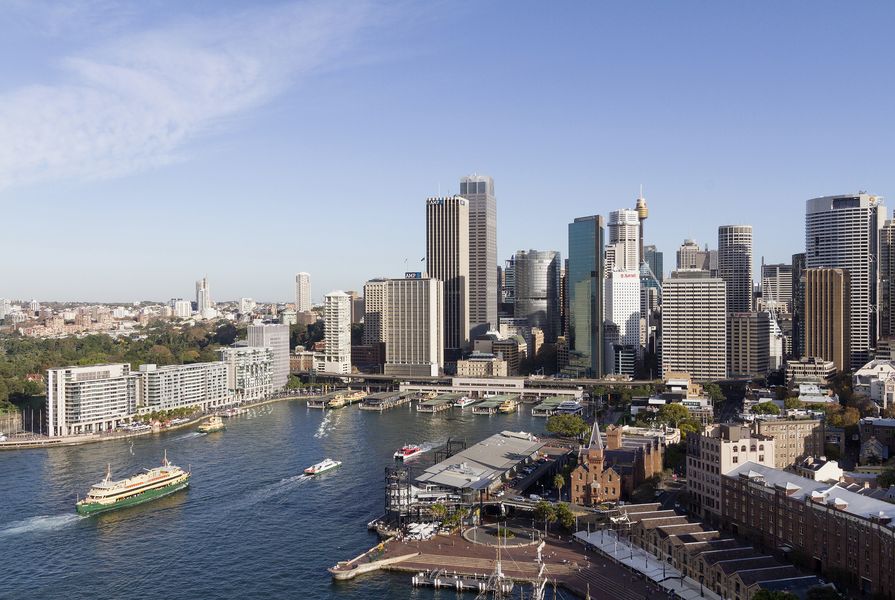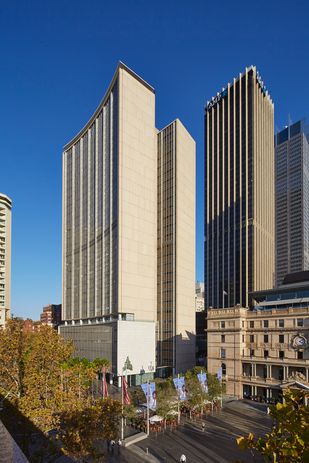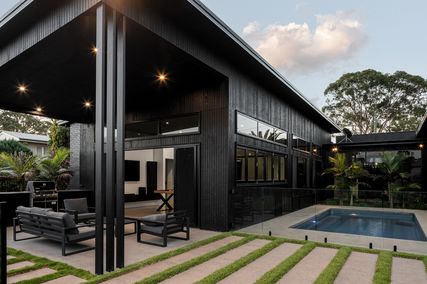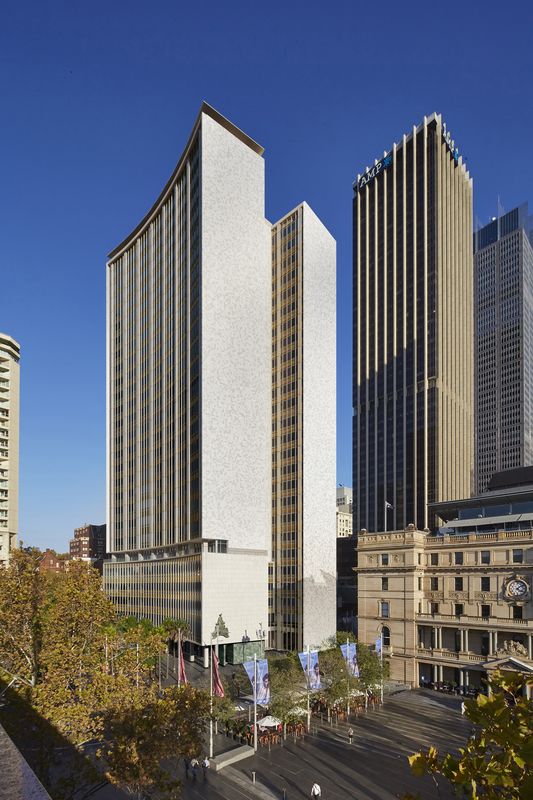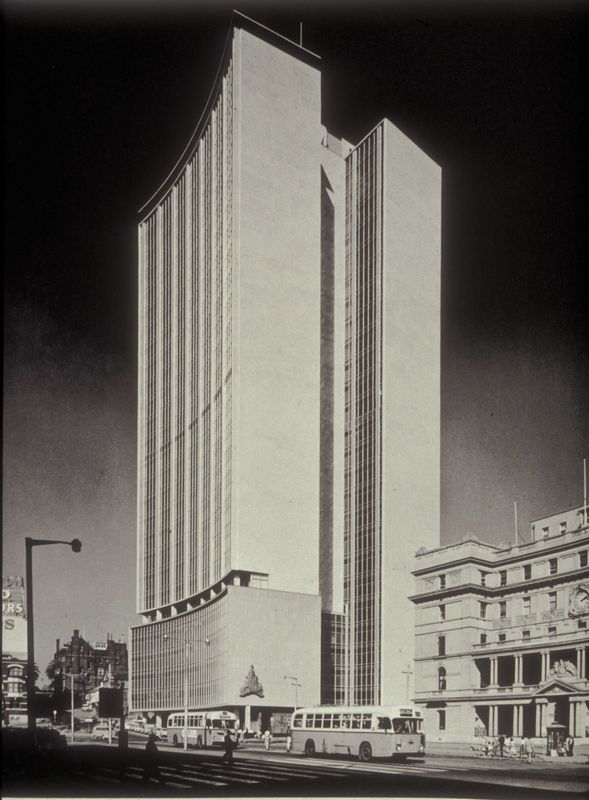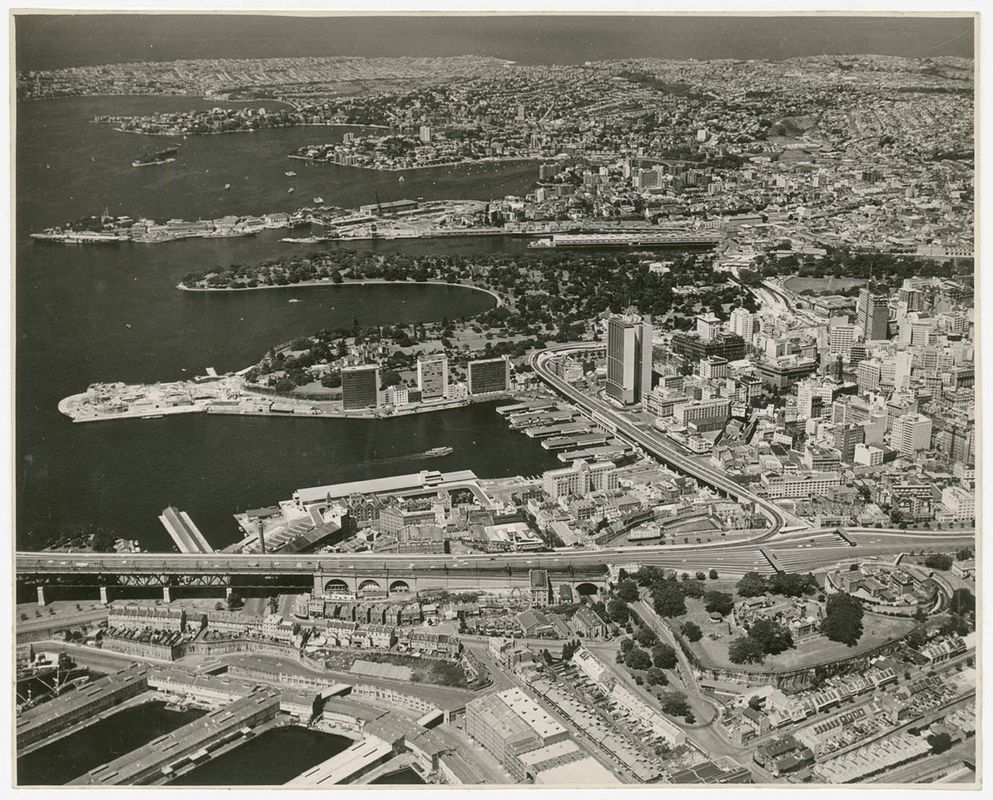Investment manager AMP Capital has submitted a development application to refurbish its heritage-listed building in Sydney’s Circular Quay, designed by JPW.
The existing AMP Capital building, originally designed by Peddle Thorp and Walker.
Image: Courtesy AMP Capital
The proposed refurbishment of the AMP building by JPW.
Image: Courtesy AMP Capital
The 26-storey AMP building, originally designed by Peddle Thorp and Walker (now PTW Architects) and opened in 1962, was Australia first skyscraper and held the title of Australia’s tallest building until 1965.
JPW’s refurbishment of the building will renew and modernize the building’s facades, reinstate some of the building’s lost features as well as significantly upgrade the building’s interiors. The upgrade will respect the building’s heritage characteristics.
The building is heritage-listed in the local government area of Sydney. According to its statement of significance, “the building is historically significant as the first building to officially break the 1912 Sydney Height of Buildings [Act] limit of 150 feet [45 metres] and thus become the tallest building in Australia, at the time of its construction.
“The building is aesthetically significant as an important work by a significant firm of architects Peddle Thorp and Walker and as a landmark site at Circular Quay, which, with Goldfield House, defines the 1960s gateway to the city. The building is aesthetically significant as the first fully free-standing skyscraper in the city of Sydney, which set a precedent keeping its tower free of the podium.”
Standing at 116 metres tall, the building is more than double the city’s height limit at the time. The building attracted a high level of controversy and criticism from Sydney’s architects, due to its height and overshadowing of the harbour.
In 1958, the dean of the faculty of architecture at the University of New South Wales, professor F. E. A. Towndrow, told the Sydney Morning Herald the building would set a “dangerous precedent.” Professor of architecture at the University of Sydney H. Ingham said, “I don’t think we should have a skyline of these buildings right around the Quay.”
In his book, Architecture in Australia: A History, published in 1972, author John Maxwell Freehand commented “the 383-feet AMP Building at Circular Quay [had] deflowered the virgin purity of the skyline and the city’s familiar scale was shattered.”
The AMP building, originally designed by Peddle Thorp and Walker was the tallest in Australia at the time of its construction.
Image: State Library of NSW
Despite its detractors, the building boasted a number of architectural firsts such as the fastest elevators in Australia, the largest heat pump air-conditioning system in the world and the first vertical document conveyer system, which was dubbed a “robot messenger” in a 1958 Sydney Morning Herald article.
The building was opened 1962 by then Prime Minister Robert Menzies who described it as “a great building and a tremendous edition to Sydney.”
In 1997, architecture critic Elizabeth Farrelly named the AMP building as one of a dozen or so “modern buildings without which Sydney would be the poorer.”
The refurbished AMP building will be part of a $1 billion renewal project dubbed Quay Quarter, masterplanned by Danish practice 3XN. The project also includes a new 49-storey office tower to the south of the existing AMP building at 50 Bridge Street, designed by 3XN, three mixed-use buildings designed by Make Architecture, Silvester Fuller and SJB respectively, the transformation of a heritage wool store by Carterwilliamson and public domain works by Aspect Studios.
Construction of the refurbishment will begin after the completion of the new tower, which is expected in 2020.

